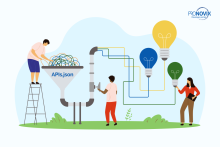Beyond great developer experience, what is your definition of an API success story - both for the sheer integration and the thus connected businesses? It clearly takes more than doing all the right things with API management and tooling to be successful. API programs need success, however, developer success takes more than technical solutions: there are oblique factors at play that contribute significantly to overall success.
At the recent Developer Success Meet event in Manhattan, organized by API The Docs and generously hosted by MongoDB, the panelists set out to discuss their experiences and API products, as well as their very own definitions of what it means for an API to succeed. Ashni Mehta (MongoDB), Joshua Markham (Verizon), and Michael Hibay (WSFS Bank) kindly shared their thoughts, and we are delighted to convey the essence of their exchange.
The many faces of developer success
If we embrace the interdependence of developer experience and business success, we may encounter the elusive term "developer success". There are as many definitions as there are organizations. Though traditional notions equate success with boosted sales or clicks, developer success goes beyond the material aspects and instead focuses on business outcomes achieved through developer programs. As developer success is such a multifaceted concept, it is no wonder that there is a wide variety of perspectives on it.
Some believe that developers simply constitute one persona within the realm of customer success, while others treat developer experience as a building block of business success. For developer experience to support business outcomes, we need to provide each user exactly what they are looking for in the format they need it. Most consider a frictionless experience imperative, along with keeping a line of communication with the community open at all times to gauge their needs and understand their intent.
It is essential to walk through the platform with actual users, and understand what their real intent is, what journey they take to achieve that, and then fill the gaps they fell into. We cannot rely on metrics and analytics only. It's the outcomes that matter, so we have to understand–and use the domain language to describe–how the user's activity correlates to their ultimate purpose. Always start the conversation with what they want to achieve. We need to know the entire life cycle for the customer journey, and know who the ultimate last beneficiary is. On the other hand, we can help the business from inside by reducing the time to recovery. Successful integration stories are part of business success and we have to share these stories.
Successes and setbacks
Reflecting on their success stories, attendees shared some of their career highlights related to developer success. Michael relayed the story of how he brought transformation to an organization that was set firmly in its ways: he first asked what the different members of the organization wanted to get out of the process at hand, and then reconciled these different points of view. This in turn led the organization to more clarity on their own goals and a more harmonious understanding among the teams. Other panelists also emphasized the importance of the human factor, citing open communication and “networks of allies” as key drivers.
The road to success is often paved with trial and error, but as Joshua Markham (Verizon) aptly pointed out, “failure is temporary”. These temporary setbacks may offer valuable lessons and opportunities for development if we are willing to take them on board.
Ashni shared a valuable lesson learnt a long time ago from a rushed deployment: in an attempt to cater to customer demand, a team decided to speed up the deployment of a feature without preparing the necessary documentation. After they documented their way out of this situation, Ashni realized the importance of insisting on providing proper docs, and summed up her takeaway as: ‘all users are brilliant [in their own way of using the API], but we have to help them along the way’.
The future of APIs
The world of tech is abuzz with novel solutions broadening the horizon of what is possible, new affordances are springing up as a result of innovation. As Michael explained, ‘affordance is the intuitive understanding of the potential and capabilities of things around us,’ and we get this through our sensory experiences. For example, when we look at a chair, we know it can be used for sitting. Just by perceiving the world around us, we can ascertain the function and purpose of the objects and technologies we interact with, and we see the potential of what could happen. These interactions are governed by constraints, however, a constraint doesn’t necessarily equal a strict limitation.
According to Alicia Juarrero’s theory, "enabling constraints" ultimately create new possibilities and encourage innovation. As APIs constrain information into strictly defined channels and formats, they provide an ideal medium for creative experimentation and new types of collaboration, both of which contribute to developer success. 'The APIs you build become completely new enabling constraints towards a new set of affordances.' Michael also pointed out that by understanding user intent, we can build these newly discovered affordances into the design and eliminate the “unknowns”.
'By describing something, we need to check in with ourselves, what assumptions are we making towards the intent of the user?', explained Michael. If we can correlate this intent with our definition of success, then we are on the right path. As the developer portal is part of the system, it should give well-defined descriptions of what we are trying to achieve. The description has to help any technologist persona along their journey towards their end goal.
Closing reflections
With many exciting developments and opportunities in mind, the panelists shared some thoughts on the future of their organizations and tech in general.
- Focusing on the human factor, Ashni highlighted the importance of listening to our communities, and this sentiment was also reiterated by Michael who considers it important to understand ‘what users are trying to accomplish’ when using our services.
- Furthermore, Michael also expressed a desire to ‘lower the barrier of entry, and expand the scope of people who would call themselves developers’, thus making this career path more accessible.
- Reflecting on the value of collaboration, Joshua highlighted the need for ‘partnerships that are beneficial to both sides’, and also expressed anticipation for new use cases and innovative solutions delivered by well-known specialists and experimenting enthusiasts alike.





